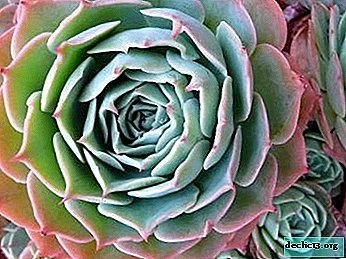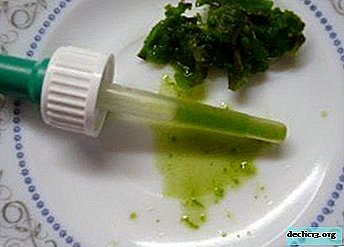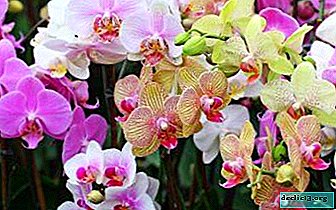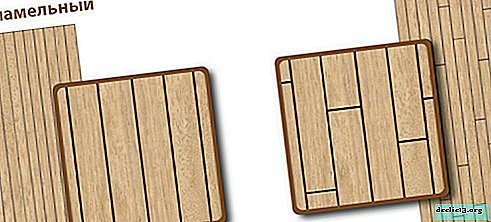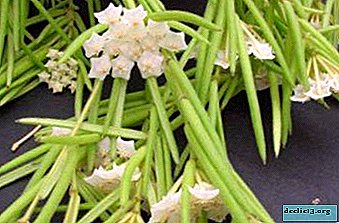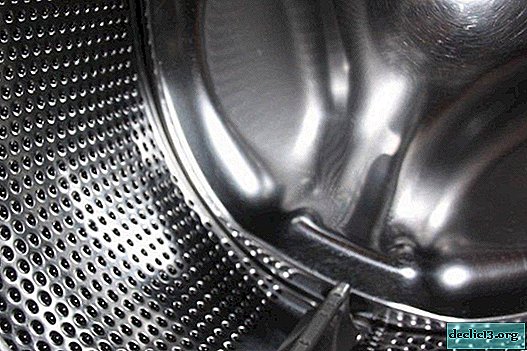The Christmas Star is fading: what if the poinsettia is sick and drops its leaves in December?
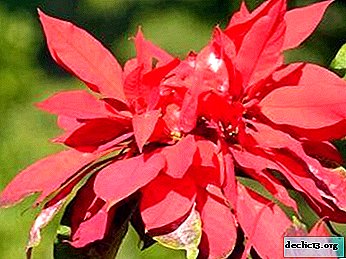
Poinsettia is a beautiful evergreen plant of the Euphorbiaceae family. The people call the flower "Christmas Star" or "Star of Bethlehem" for the unusual shape of bright red bracts.
The flower is called disposable, despite the fact that it is an evergreen plant and can please the owners for more than one year. The reason lies in the features of its development and the difficulties of care.
From the article you will learn what diseases and pests can attack the beauty, and also why the foliage does not blush and fall.
Why does the foliage not blush and fall?
- The flower partially throws off the greens. Most likely the plant is frozen or standing in a draft. It is necessary to ensure adequate thermal conditions, to eliminate the draft.
- Completely discards leaves, what should I do? At the end of the vegetative period, the flower discards all leaves. The reason is natural - the flower goes to rest. It is necessary to wait until the leaves fall completely and cut the stems in half with scissors and put the flower in a darkened cool place (temperature should not be below 10 ° C) for 1.5 months. During the rest period moderate watering is carried out. By the summer, poinsettia will again start green shoots.
- What if it falls in December? It would seem that December is the time of flowering of the plant and it is illogical at this time to drop the leaves. But there may be reasons for this:
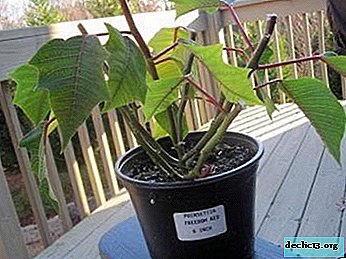 low indoor temperatures;
low indoor temperatures;- dry air
- little light;
- drafts;
- lack of nutrition.
In this case, it is necessary to find and eliminate the cause. Rearrange the flower on a light windowsill, provide a comfortable temperature of +17 or +20 ° C, exclude drafts. From spring to budding, complex mineral fertilizers are applied to the soil once every 2 weeks (liquid flower dressings of Agricola or Kemira). During flowering, potassium fertilizers are applied once a month.
Flower disease
Any plant needs attention. If you forget about the flower on the windowsill, skip watering, do not observe the temperature regime, then once, opening the curtains, you can see a bare, dried plant.
- Will fade after purchase. Poinsettia is usually purchased in the winter during its flowering, and January-February is the period of completion of flowering and leaf decay. When choosing a green pet, you need to be guided by the following rule: look not at the bracts, but at the flowers. They should be in buds, not blooming.
- The plant turns black. Poinsettia is a tropical plant. Low temperatures cause the plant to freeze and blacken the leaves. It is necessary to observe the thermal regime.
- Rust. If, upon examination of poinsettia, leaves were found that had yellow opal, rust at the edges, then the reason is too high air temperature and low humidity. It is important to spray the leaves in a timely manner, if necessary, rearrange the plant in a cooler comfortable place.
- Loss of elasticity. If the leaves have lost their elasticity, turgor, began to look lifeless, then the reason lies in improper watering: there is either too much moisture or too little moisture. In this case, you need to adjust the irrigation process. Poinsettia loves moist, but not moist soil. It is important to monitor the soil and water immediately, as the top of the soil becomes dry. Do not dry.
- If everything is dry and dies, how to reanimate? The actions are the same as when sending a flower to rest:
- cut the plant in half (about when to cut poinsettia and how to do it correctly, read here);
- set the pot aside in a dark, cool place;
- water no more than 1 time per month;
- get it in 2-3 months;
- wait for new shoots.
- The plant froze, how to save? They opened the window and the flower froze, and the leaves turned black? Need to:
- cut frostbite shoots;
- put in a warm place;
- treat with zircon - a biostimulator of plants.
Also, some poinsettia owners complain that it does not bloom. What to do when such a problem occurs, we wrote here.
Fungal diseases
Gray mold

External signs of this disease: gray mold on inflorescences and bracts, discoloration and dying of diseased stems and young shoots.
Cause: Botrytis cinerea fungus is actively developing in conditions of high humidity and cold.
Help: carefully select and remove all parts of the plant affected by rot. After that, treat the flower with foundationazole.
Reference! Fundazole is a fungicide with a systemic and contact effect. As a result of processing, the fungi stop reproduction, division.Rizopovy rot

External signs: the aerial parts of the plant are affected by black and gray rot. In this case, the decaying tissue of the flower draws a pale "web".
Cause: pathogen Botrytis, like all fungi, actively develops in conditions of high humidity.
Help: at the first symptoms of the disease, treat with Kuproksat or Topaz.
Reference. Cuproxate is a fungicide whose action is due to the penetration of copper ions into the cell by pathogens, interacting with enzymes, inhibiting development, disrupting respiration and protein denaturation. Topaz is a fungicide, active due to penconazole: it inhibits infection at the time of spore germination and penetration of the growth tube of the fungus into leaf tissue.Southern late blight

External signs: wilting of leaves, rotting and softening of the roots of the plant.
Cause: Phytophthor fungus intensively develops in conditions of stagnation of water in a pot.
Help: Providing good drainage, regulating watering (rarely, but abundantly). Treat the flower with Allette.
Reference! Alette is a systemic protective fungicide. Inhibits and inhibits the germination of fungal spores and blocks the further spread of the disease. Prevents infection from entering the plant.The defeat of the fungi of the genus Pithium

External signs: Depressed dark spots appear on the flower stalk, the roots look frayed and rotten, with a lagging shell.
Causes: fungi from the genus Pythium, which develop in conditions of dampness and low acidity of the soil.
Help: temporarily stop watering, transplant into dry and loose soil, spray poinsettia with fungicide Ridomil.
Reference! Ridomil is a fungicide for the prevention and treatment of plants. It is used to combat late blight, alternariosis and other fungal diseases.Brown rot

This disease is characteristic of young plants.
External signs: the base of the stem becomes thinner, becomes brown, as a result it easily breaks and dies.
Cause: fungal infection. The mushroom settles on the root neck of the plant and softens it. Actively develops in conditions of high humidity.
Help: treat the stems at the base with Rovral.
Reference! Rovral - contact fungicide to protect crops from a complex of diseases. Rovral is effective against a wide range of pathogens.Mildew Root

External signs: the roots become brown, overgrown with small white roots. Young leaves turn pale, while old leaves turn brown from the edges.
Cause: fungal disease. Actively developed with a lack of mineral salts.
Help: fertilize with mineral salts. Adjust the watering mode - often, little by little. Spray the plant with Previkur fungicide.
Reference! Previkur is a systemic two-component fungicide. It can be used for watering and spraying. The action is directed against pathogenic flora.Fusarium wilt

External signs: The shoots of the plant become brown inside, then blacken and die.
Cause: mushrooms of the genus Fusarium. Penetrates into plants through wounds or pores of leaves, and in the process of their life in large quantities form mycotoxins that poison and destroy plants.
Help: release the flower from the affected shoots, treat with Baktofit.
Reference! Bactofit is a biological fungicide whose action is aimed at fungal and bacterial pathogens.Pests
Nematodes

The action of worms is aimed at pumping juice from indoor flowers. Gather in colonies in veins and petioles of leaves, in dense, cotton-like discharge.
What to do: clean the plant with a swab soaked in soapy water, then spray with garlic infusion or calendula pharmacy tincture. In difficult cases, apply Aktara and Fitoverm insecticides three times a week.
Reference! Actara and phytoverm are systemic insecticides with an intestinal contact effect. Active against nematodes.Aphid

Aphid lives on the most tender shoots of poinsettia, which are easier for them to pierce and infect.
Help: wash the flower with soapy water. Further, treatment with onion or tobacco infusion with an interval of 5 days will be required. You can apply the chemical spark.
Reference! Spark - contact-intestinal insecticide against sucking and gnawing insects. The active substance is an emulsion of avertin.Spider mites

The spider mite is a small red bug that is difficult to notice with the naked eye, but small yellowish spots near the tips of the leaves indicate its presence. Spots - the place where the juice of the plant was sucked from. For a plant, a spider mite is not very scary. To suck out all the poinsettia juice will require a huge amount of tick, which is unlikely.
Cause: low humidity in the room.
Act: treat the surface of the leaves with insecticidal soap.
Mealybug

Mealybug is a sucking insect. The body is pink or white with transverse stripes on the back. Appearance and dimensions make it possible to see it with the naked eye. The insect produces white sticky mucus. At the same time, the plant looks like sprinkled with flour or as if lumps of cotton were placed on the shoots. A powdery mealybug lurked under these cotton balls. Leaves when damaged by insects turn yellow.
Cause: abuse of nitrogenous fertilizers, elevated air temperature.
Help: treat with a damp sponge moistened in garlic solution or soap-alcohol solution (dissolve 1 tsp of grated laundry soap in hot water, bring the volume to 1 liter, add 1 tbsp of alcohol and 2 tbsp of vodka. Treat the plant every 3-4 days).
By March 8, housewives distill tulips and hyacinths, and poinsettia is grown by Christmas. This flower has always been a bright and colorful decoration of Christmas days.

 low indoor temperatures;
low indoor temperatures;

